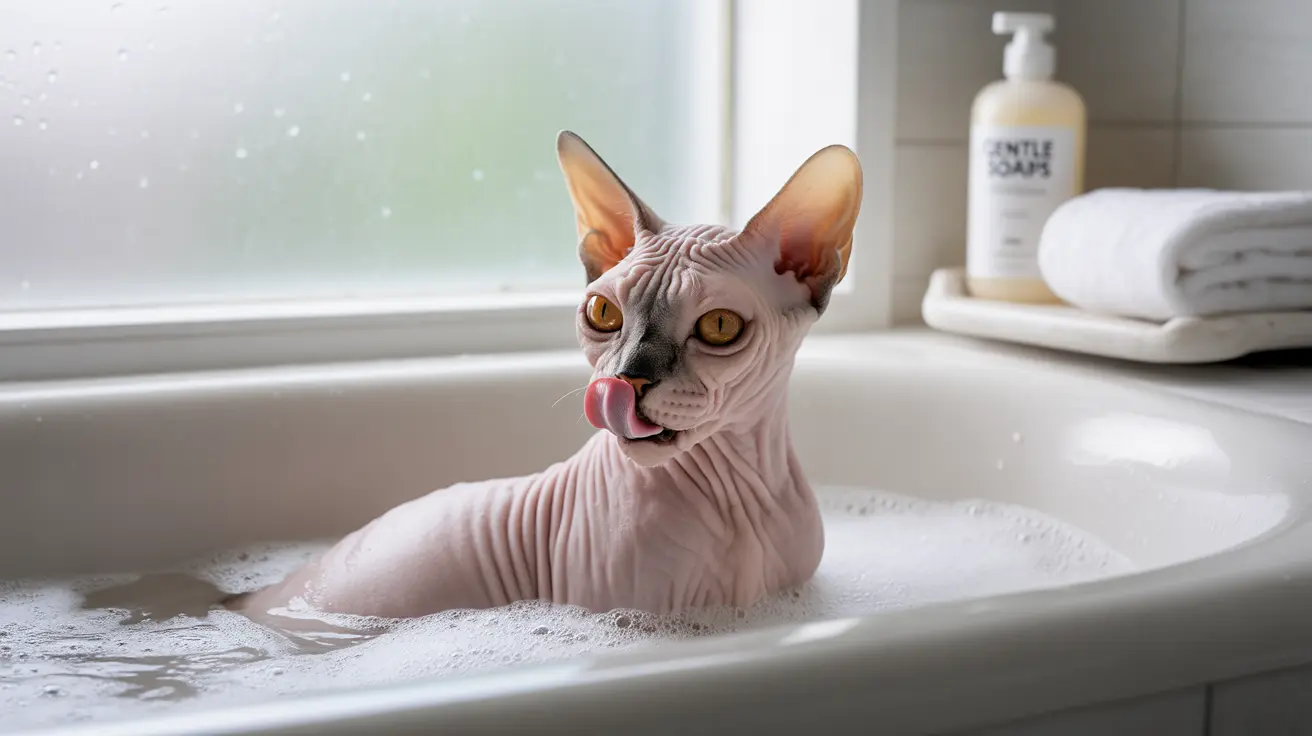The Science Behind Cat Allergies
Contrary to popular belief, cat allergies aren't triggered by fur itself. The primary culprit is a protein called Fel d 1, which cats produce in their saliva, skin oils, and urine. This protein becomes airborne when attached to microscopic particles of dander (dead skin cells) that all cats shed, regardless of their coat type.
Even without fur, hairless cats continue to produce these allergenic proteins. In fact, the Fel d 1 protein is present in their skin secretions and saliva just as much as in their furry counterparts. When they groom themselves, they spread these allergens across their skin, which can then transfer to surfaces in your home.
The Truth About Hairless Cats and Allergies
Despite marketing claims and widespread beliefs, no cat breed is truly hypoallergenic - including hairless cats. While Sphynx cats might shed less dander due to their lack of fur, they still produce the allergens that trigger reactions in sensitive individuals.
However, some people report experiencing fewer allergic reactions to hairless cats. This may be because there's no fur to trap and spread allergens throughout the home. Yet, it's important to note that individual experiences can vary significantly, and what works for one allergy sufferer may not work for another.
Special Care Requirements for Hairless Cats
Hairless cats actually require more frequent grooming than their furry counterparts. Without fur to absorb their natural skin oils, these cats need regular baths (typically weekly) to prevent oil buildup and maintain healthy skin. This intensive grooming routine can actually help reduce allergen levels in your home.
- Weekly baths with cat-specific shampoo
- Daily skin wiping to remove oil buildup
- Regular ear cleaning
- Frequent nail trimming
- Protection from sun exposure and temperature changes
Managing Allergens with a Hairless Cat
If you're considering a hairless cat despite having allergies, several strategies can help minimize exposure to allergens:
- Use HEPA air purifiers in main living areas
- Clean and vacuum frequently
- Wash cat bedding regularly
- Consider allergen-reducing pet foods
- Maintain a consistent grooming schedule
- Keep the cat out of your bedroom
Additionally, working with an allergist can help develop a management plan that might include medications or immunotherapy to reduce your sensitivity to cat allergens.
Frequently Asked Questions
Are hairless cats like the Sphynx really hypoallergenic?
No, hairless cats are not truly hypoallergenic. They still produce the Fel d 1 protein that causes allergic reactions, although some people may experience fewer symptoms due to the absence of fur that typically traps and spreads allergens.
What causes allergic reactions to hairless cats if they have no fur?
Allergic reactions are caused by proteins (primarily Fel d 1) found in cats' saliva, skin oils, and urine - not their fur. Hairless cats produce these same proteins, which can trigger allergic responses in sensitive individuals.
How can I reduce cat allergens from my hairless cat at home?
Regular bathing of your hairless cat, frequent cleaning of living spaces, using HEPA air filters, and washing cat bedding often can help reduce allergen levels in your home. Consider using allergen-reducing pet foods and keeping your cat out of sleeping areas.
Do hairless cats require special grooming to manage allergens and skin health?
Yes, hairless cats need weekly baths, daily skin wiping, and regular ear cleaning to manage oil buildup and maintain skin health. This intensive grooming routine can help reduce allergen levels while keeping your cat healthy.
Is it safer for allergy sufferers to choose female or neutered male hairless cats?
Female and neutered male cats typically produce less Fel d 1 than intact males, making them potentially better choices for allergy sufferers. However, individual reactions can vary, and spending time with a cat before adoption is recommended.
Conclusion
While hairless cats aren't truly hypoallergenic, their unique grooming needs and lack of fur-trapped allergens might make them a workable option for some allergy sufferers. The key is to make an informed decision based on personal sensitivity levels and willingness to maintain the special care requirements these distinctive felines need.






